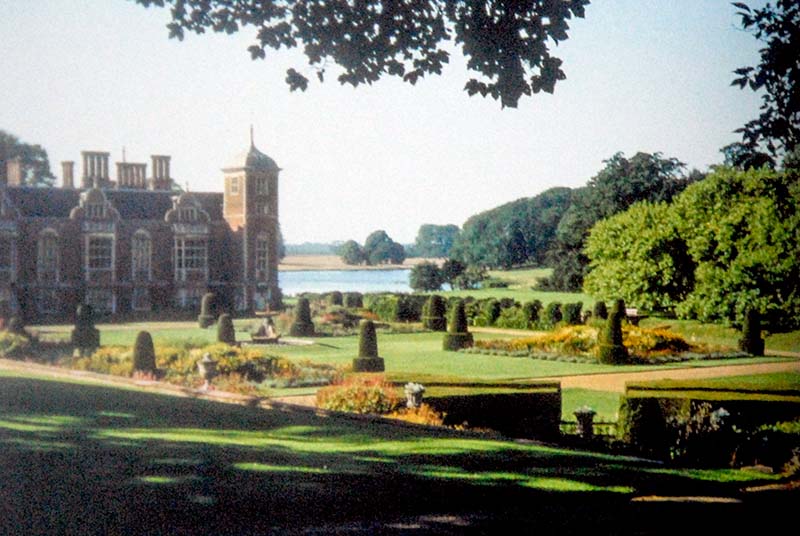Shades of Green!
The National Trust in Great Britain is probably one of the most successful conservation and preservation organisations in the world. It is the largest landowner in Britain and, were it not for the National Trust many irreplaceable buildings and gardens would have been lost. Despite these achievements it has often been the target of complaints and criticisms, at times quite bitter, and, unfortunately perhaps, these criticisms oftentimes gain a momentum beyond their value. The most talked about criticism of recent years concerned the work of the two lady gardeners, Pam Schwerdt and Sybille Kreutzberger at Sissinghurst and it was, in essence, that under their stewardship the gardens had simply become too good. As John Sales says, “Under their control and the Trust’s management, Sissinghurst set a new standard for gardens open to the public which has never been surpassed.” Isn’t it extraordinary that such perfectionism and success is met with such criticism!

John Sales, after college, parks work, lecturing at Writtle College and managing the campus gardens there, was appointed gardens adviser, under the wing of the famous Graham Stuart Thomas, and, subsequently in 1971, he was appointed Head of Gardens of the National Trust. The Trust already had a number of gardens but it was only in this period that a greater understanding of the historic and cultural significance of gardens came to be appreciated and valued, an appreciation furthered by the foundation of the Garden History Society in 1965 and English Heritage in 1983. It was also a period when the numbers visiting gardens simply boomed and the demands on those with charge of these gardens increased proportionately to balance the needs of accommodating the public and yet preserve, conserve, renew and develop the gardens. John Sales guided this process for twenty five years, a monumental responsibility and challenge in the hands of a man of matching capabilities.


He tells this story through his experiences with fifty of the National Trust’s gardens and it is an account which is insightful, informative and, oftentimes, entertaining. This is a book which could open our eyes, change our opinions and enhance our enjoyment and understanding of the gardens of the National Trust and, indeed, of gardens in general. He outlines the challenging early days of the then new discipline of historic garden conservation, the first garden restoration at Westbury and the 100-year plan for Stourhead in 1978, the first of its kind. His approach has always been informed by his philosophy that gardens are a process rather than a product, that change is of their essence and must be embraced. It is a philosophy which guided him in assessing older gardens where original, and historically very significant designs have had additions from following generations – which layers of the garden are now to be given precedence in the conservation project? These challenges are illustrated and subsequent actions explained for many of the gardens included in the book and it all makes for very interesting reading and consideration. My conclusion, having read the book with considerable attention and interest, might be best expressed by saying I believe that on all occasions The Trust, its Garden Advisor and the gardeners of the individual properties have done their honest best.


John Sales interaction with people runs as a thread through the book: dealing with owners and the handover of their property to The Trust, dealing with owners who remain on as tenants, head gardeners in place who may have been the heroes who prevent total decay and loss or who become obstacles to change and development, newly appointed head gardeners with varying degrees of enthusiasm for and commitment to the Trust’s plans and, ever present, there are the members of committee, some of whom are wonderfully progressive and supportive while others were less so. I am unaware of John Sales place of birth but he must certainly be a northern or have inherited those traits for, as would be appropriate for a gardener, he calls a spade a spade and his comments on people are outspoken, direct and unhindered. Praise is generous and fulsome when given and criticism sharp, clear and without hesitation.

It all makes for a wonderfully readable book, informative, insightful and entertaining and I recommend it to you wholeheartedly and enthusiastically.
[Shades of Green: My Life as the National Trust’s Head of Gardens, John Sales, Unicorn, London, 2018, Hardback, 328 pages, £25, ISBN: 978-1-910787-00-7]

